Escape to Wine Country
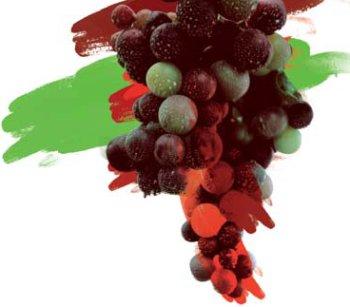
Acres of vineyards await in Japan’s answer to Napa Valley
By Sarah Noorbakhsh
Only about 200 kilometers from central Tokyo is a lush and green country that feels thousands of miles away in spirit. The region is auspiciously known as the fruit basket of Japan, a title hailing from the variety of produce farmed here. Lying contentedly in the shadow of Mt Fuji is Yamanashi Prefecture, a mountainous landscape cradling a basin that has been blessed with a relatively mild and dry climate. Although the land-locked prefecture cannot offer any of the seafood and other delights common throughout Japan, residents here can boast almost unlimited access to the coveted fruits and vegetables that city dwellers find so expensive.
This wealth is apparent almost immediately after you exit the highway and enter the quiet countryside, as signs for orchards, roadside stands and fruit picking excursions call out left and right. With each season the signs change, moving from strawberries to cherries, peaches, apples, potatoes and even kiwis. But exit the Chuo Expressway at a small city called Katsunuma and it’s immediately clear what the area is most famous for; left and right are trucks hauling, storefronts touting and family farms gathering grapes, grapes, grapes.
And while it’s true that 25% of the total grapes produced in Japan originate here, the Yamanashi basin holds a far greater, nobler pride than mere table grapes. Yamanashi is wine country.
Often promoted as the “Napa Valley of Japan,” the surrounding mountains create a convenient geographical location that provides both stunning views and a cool, relatively dry climate that is far more ideal for growing grapes than other areas of Japan. Starting from the narrow and winding streets of Katsunuma to where the convenience stores and residential blocks transform into rolling green hills and ancient tiled roof structures, signs for wineries smile cheerfully from the side of the road, inviting visitors to stop by and sample a few simple glasses of what the area has to offer.
Wine making has quite a short history in Japan. Although it’s speculated that grapes themselves have been in Japan for about 1000 years—and that Jomon period Japanese were getting tipsy on fermented grape juice— actual wine production is an art that entered the country during the wave of Westernization that swept through during the Meiji Era in the late 1800s. Even for a great number of years after wine production began, the acidic taste of the beverage did not suit the local palate. Wine was generally sweetened with honey or sugar, transforming it into something of a port wine.
"As Japanese consumption grows, the region producing domestic wines has begun to come of age"
Today tastes have changed, and as Japanese consumption grows, the region producing domestic wines has begun to come of age. Entering this “Napa Valley” is somewhat of a magical experience, as the familiar sights of the Japanese landscape are gradually traded out for a more serene view. Acres upon acres of vines stretch out across the fan-shaped basin, with the plants mounted on trellises overhead to provide air circulation in the slightly damp climate.
With so many wineries it’s difficult for a first time visitor to choose, and although the local tourist association provides a map of all the wineries in the area, a bit more research reveals a few select favorites with both natives and visitors alike. Budo no Oka and its Katsunuma Wine Cave is undoubtedly the most popular destination, offering visitors the opportunity to be their own sommelier—or to turn into a lush—with over 170 different wines to sample freely from a small tin dish.
There are plenty of choices for those looking for a more leisurely experience, with two favorites being Grace Winery and Suntory’s Tomi no Oka Winery. Grace offers guided tours in small groups, where visitors are led into the vineyards and given a detailed explanation of the Cabernet Sauvignons, the Merlots and the region’s pride and joy, the Koshus.
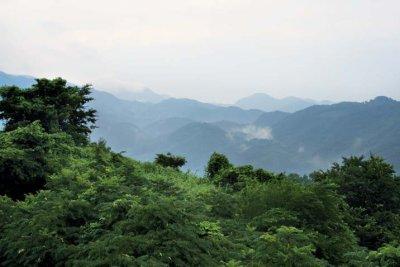 Rolling green mountains surround Yamanashi’s winery district.
Rolling green mountains surround Yamanashi’s winery district.
Japan’s humid climate does not make for ideal grape growing, and although Yamanashi is able to avoid the worst of that sub-tropical climate, it still does not make life easy for more delicate varieties of European grapes. The Koshu grape, however, is native to the land and has over centuries of adaptation developed a thick skin that makes it resistant to rot. The grape was originally consumed as a table grape, and quite popular with the Tokugawa Shogunate. Yamanashi proudly promotes the Koshu as the Japanese contribution to the wine making world, but unfortunately the thick skin worn as protection from the elements produces a bitterness that affects the flavor of the wine. Various techniques have been developed to minimize the bitter flavor and the region is gradually pushing for international recognition of this purely Japanese wine.
Inside the cool stone building that is Grace Winery’s main establishment, visitors are treated to a guided tasting session exploring three whites and three reds. The atmosphere is casual and elegant, and one gets a sense of both the care and the pride put into the production of the wines. Visitors can sample Grace Koshu, a pale yellow white wine with a firm acidity and citrus aromas that reportedly pair well with sashimi. Grace Koshu took the grand prize at the 2007 Japan Wine Challenge and is also offered to travelers at the ANA Lounge in Narita Airport. Although the winery itself does not have a restaurant, small bistros and traditional Japanese teishoku are located nearby, both of which liberally carry a variety of local wines.
For those seeking atmospheric experience more than excellent wines, about 45 minutes away sits the grand estate of Suntory’s Tomi no Oka Winery. With its massive stone buildings and wooden doors, it’s easy to imagine that this could be a historical winery tucked away somewhere in France or even Italy.
Yet even after a lengthy and educational presentation about grape cultivation and the art of flavor, the tasting seminar reveals three rather lackluster wines that snap visitors out of their European daydreams. Suntory’s Tomi no Oka wine, both the white and the red, are similar in both body and flavor to what one might expect when ordering the house wine from the corner Italian place.
Those who come for the atmosphere will not be disappointed, however, as the Wine Garden provides an absolutely stunning view of the company’s vineyards framed by the surrounding mountains and city below. Views of Mt Fuji, sitting stately in the background, are inescapable, and the landscape is certainly enough to distract from the quality of the wine. Both free and fee-based wine tasting inside the wine shop gives visitors a chance to dig for diamonds in the rough. JI
 Suntory’s Tomi no Oka winery
Suntory’s Tomi no Oka winery
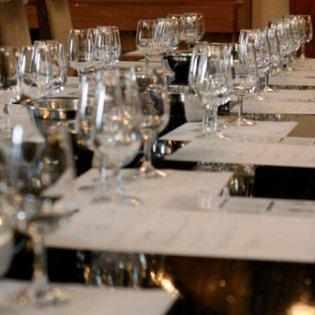 Grace Winery’s tasting room
Grace Winery’s tasting room
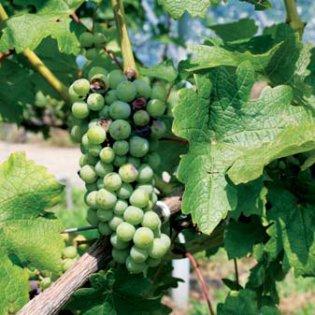 Cabernet Sauvignon at Grace Winery
Cabernet Sauvignon at Grace Winery
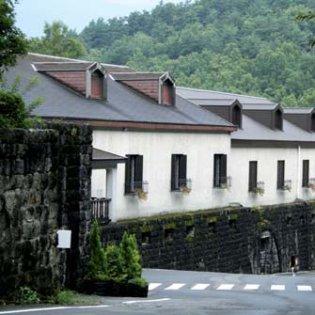 Store houses at Tomi no Oka winery
Store houses at Tomi no Oka winery
Wine isn’t the only pleasure Yamanashi has to offer. These destinations are a great way to enjoy the local culture— and to sober up between wineries.
Fruit Picking
With each season bringing a new bounty, a variety of natural delights is just waiting to be harvested. Most farms and orchards offer eat-as-you-go fruit picking excursions with the option of taking a box home for family and friends.
Houtou and Basashi
No ocean means no seafood, and the prefectural smorgasbord is headed by houtou, a hotpot of miso-based broth with thick udon noodles, vegetables and pork or chicken. For the more adventurous, try basashi, or horse sashimi.
Hot Springs
Slipping into a hot mineral bath is a great way to end a long day of wine tasting. Isawa Onsen, which sprang up from a vineyard in 1961, is the largest hot spring resort in the area. Nishiyama Onsen offers great views of the Southern Alps from its outdoor baths.





